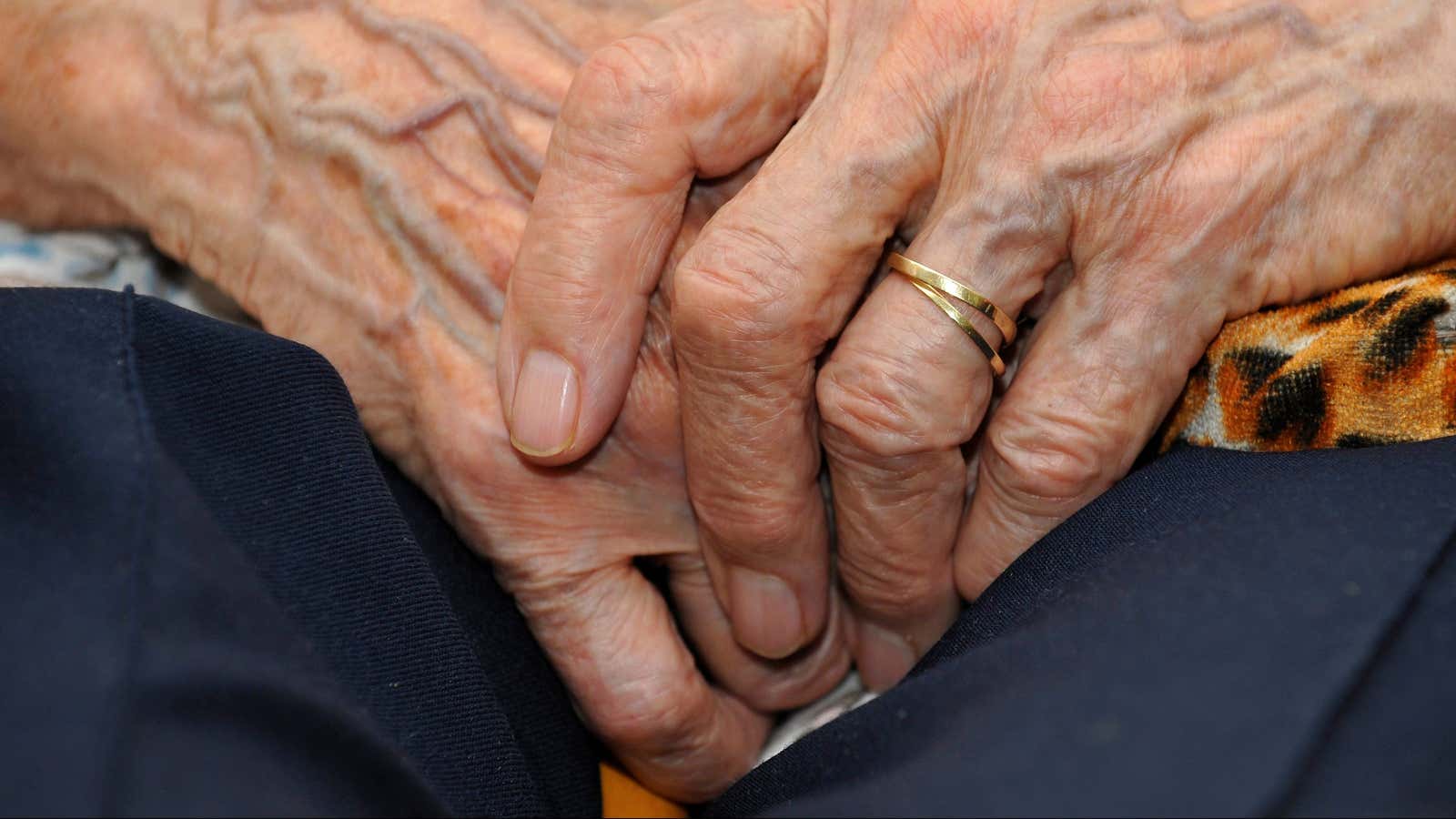Earlier this year, the US Census Bureau released findings from its 2017 population survey. The year to watch for, it said, is 2030. By then, all the Baby Boomers will be over 65. Five years after that, there will be 78 million people 65 and over, making that demographic outnumber those 18 and under for the first time.
All of these elderly people will need some amount of medical care. After our bodies have endured a lot of living, organ systems start to feel the toll. Previously simple tasks like house cleaning and running errands can become difficult. Isolation is a problem, too. “Most of our patients have multiple medical problems, medications [to manage], physical function issues, and psychosocial and family issues,” says Sharon Brangman, a geriatrician at SUNY Upstate Medical University in New York and former president of the American Geriatrics Society.
The goal in geriatrics is to manage the care of the “oldest old” patients in a way that keeps them living comfortably in their own homes, as opposed to in an assisted living facility or nursing home. When the field was created several decades ago, geriatrics meant treating patients over 65. Back then, “65-year-old[s] looked a lot different than they do now,” Brangman said. Now, typically the oldest old are those over 85 (although there are patients who age more rapidly due to chronic illnesses).
At the moment, there are just over 7,200 practicing geriatricians (pdf) in the US, with roughly 3,600 working full-time. The bad news is that by 2030, the US will need to nearly double that number again to meet the demand of an estimated 31,000 patients. To do that, 450 more people would have to receive training to become a geriatrician per year, according to the New York Times (paywall).
“We’re behind in terms of our pipeline and production,” Brangman says. To become a doctor students have to go through four years of college, four years of medical school, and then at least three years of a residency program (although residency can last up to 10 years). Internists and family medicine doctors may begin practicing immediately after they complete their residencies. To specialize in geriatrics, doctors then have to go through an additional year-long fellowship. In other specialties, these fellowships are highly competitive, and only accept the best and the brightest. In geriatrics, though, many of them remain unfilled.
But this extra training doesn’t pay off for geriatricians the way it does for other medical specialties. According to a 2018 report from the Medical Group Management Association (MGMA), the median salary for a geriatrician in 2017 was around $232,000 . Both internists and family medicine doctors make more money with one less year of training. Cardiologists, who go through at least a three-year fellowship after their residencies, and anesthesiologists, who have a mandated four-year residency, earn almost double geriatricians.
That said, salaries for geriatricians are now increasing as demand for them grows, Brangman notes. A spokesperson from MGMA provided Quartz with a trends report showing that compensation for US geriatricians has increased by more than 10% in the last five years. Compensation for specialists overall has increased by about 6%.
Correction: A previous version of this story stated there were 7,200 full-time geriatricians practicing in the US. That figure actually includes part-time geriatricians. There are roughly 3,600 full-time geriatricians in the US.
